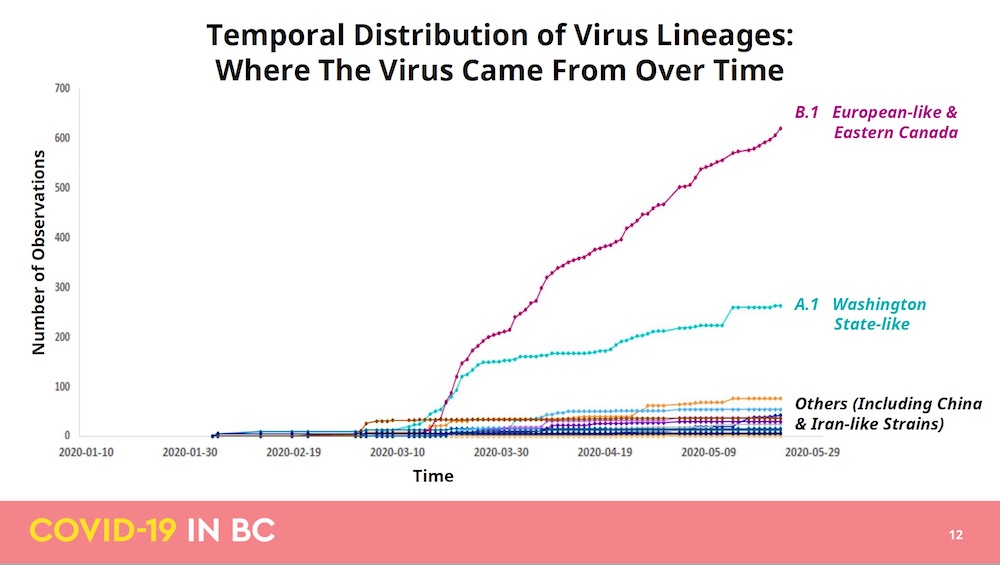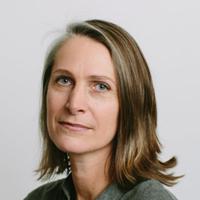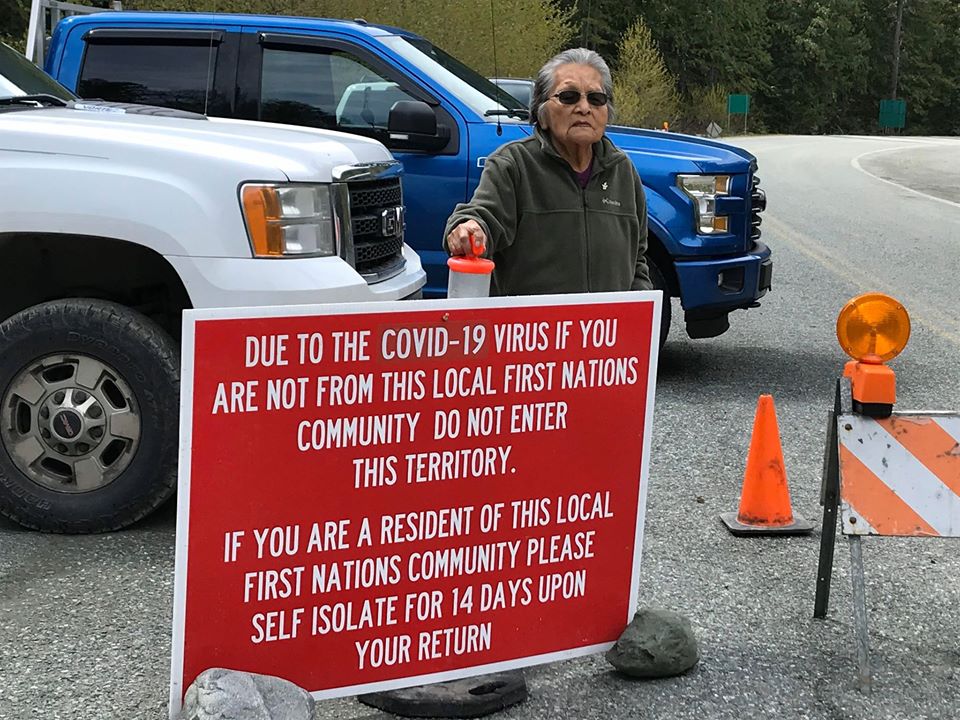Despite new data showing COVID-19 is no longer active throughout much of the province, both B.C.’s medical health officer and some First Nations say it’s important to stay vigilant.
Nations like the Tahltan in the north and Heiltsuk on the coast have asked all visitors — including members from outside the territory — to hold off travelling there this summer.
That’s unlikely to change anytime soon.
“We are still doing everything we can to ask people to not bring the risk into our communities this year,” Tahltan Central Government President Chad Day said. The nation has cancelled its annual generally assembly, which normally takes place over a week in early July and attracts members from across Canada and the U.S.
“Unlike some other places where they have flattened the curve, we can’t afford to have any curve in Tahltan territory. If we have a positive case up there, usually medivac situations take several hours and there would only be one helicopter in the area that was adequately prepared to do a medivac.”
The Northern Health Authority covers two-thirds of the province and has seen relatively slow increases of COVID-19 over the past three months, dropping from an average one or two a day early in the pandemic to none over the past week. On Thursday, Health Minister Adrian Dix confirmed that all cases outside the Lower Mainland, including 64 in the north, have been resolved.
“That really reflects the work of communities and the work of public health in the north,” Dix said. “One can look back retrospectively and say, that was relatively little compared to what was expected. The risk in the north was always a consideration, the risk of isolated communities always high, so that’s why we took the actions that we took.”
“For people in the north, the fact that the cases that we’ve identified and tested positive are all resolved — as they are in Vancouver Island, as they are in Interior Health — is all good news.”
For the first time, the province has released COVID-19 numbers broken down into health service delivery areas.
The northeast and northwest service delivery areas — including the 93,500-square-kilometre Tahltan territory — haven’t seen a new case of COVID-19 since May 18. Each have had 14 cases of the virus since it was first reported in the province in late January.
The Northern Interior service delivery area, which includes the communities of Prince George, Quesnel, Mackenzie, Vanderhoof and Burns Lake, has seen 36 cases during the pandemic, four of them as recently as late May.
B.C. medical health officer Dr. Bonnie Henry said the encouraging numbers aren’t a reason to become complacent.
“There’s nothing that we would do differently in the north right now than we’re doing everywhere else because we’ve done this in a co-ordinated way around the province,” Henry said Thursday. “We all have the same low risk at the moment because we’ve all been doing the right things and we need to continue doing them.”
There were 193 active cases in the province on Friday, with just one new case in the previous 24 hours.
“We’ve done this as a co-ordinated provincial effort, and it was important that we take the same measures across the province,” Henry said. “We know that people are still moving. There’s still risk out there. We’re still seeing cases come in from Alberta and related to other things, related to essential workers that are coming back and forth from Alberta, the United States and other places.”
Other western provinces have not been as successful in keeping numbers low in remote areas. Alberta Health Services has reported 110 cases linked to an outbreak that started in mid-April at Kearl Lake, an oil sands mine about an hour north of Fort McMurray. In B.C., 19 cases are related to the Kearl Lake outbreak, some of them in the north although exact distribution is unknown.
Work camps bringing people into remote regions on rotation have been a concern in B.C. because of their proximity to communities with limited resources. Indigenous communities, which often struggle with sufficient access to food, clean water, medical equipment, housing and health-care staff, have been especially cautious about preventing COVID-19.
Those fears were realized in La Loche, Saskatchewan, an Indigenous community of about 2,800 people located more than 600 kilometres north of Saskatoon. The community has reported 182 cases and nearby Clearwater River Dene Nation has reported 32 cases. In total, northern Saskatchewan has seen 40 per cent of the province’s 648 cases. Out of the province’s 29 active cases, 18 are in the north.

B.C. shared genomic tracing data Thursday that revealed some of the earliest strains to enter the country, those found in Iran and China, were contained early. The two COVID-19 strains that caused the majority of cases in the province are one from Europe and Eastern Canada and a second from Washington state, which on Friday reported 264 new COVID-19 cases.
While the border remains closed to non-essential travel between Canada and the U.S., Alaskan snowbirds returning home after the winter have been told they can drive through B.C. with proof of residency and without being required to quarantine. They are asked not to stop along the way during the 32-hour drive.
Day said American travellers have already been spotted camping near Tahltan communities along Highway 37, which is a popular travel route between Alaska and the Lower 48.
“There’s definitely been a lot of pressure of late because you’re on the Alaska Highway, you have a lot of people coming in,” he said. “It’s making a lot of people quite nervous.”
In Bella Bella, the Heiltsuk Nation shares the Tahltan’s concerns with tourism. Last summer, more than 400 boats stopped in the community of 1,400 people to fuel up and restock. Chief Councillor Marilyn Slett, whose ancestral name is K̓áwáziɫ, said a non-essential travel restriction for the community will remain in place for the time being.
“A lot of tourists will traverse through our territory in the summer,” she said. A community patrol is in place to monitor the marina and an emergency response team meets the ferry. “We have really kept that perimeter around our community, just because of our limited resources with our hospital.”
Bella Bella has one ventilator and medivac flights to Vancouver are never guaranteed, given coastal weather. Its hospital is already at capacity and the community’s school gymnasium has been set up for anyone needing to isolate.
“Knowing that B.C. has flattened the curve and looking at a restart plan and easing up on their restrictions, we’re saying here on the coast that our limited resources remain the same. We have a small hospital that has reached its capacity, and that’s non-COVID related,” Slett said. “For us, making sure that we’ve got a good system in place, information that we can draw upon and a team of culturally sensitive contact tracers is really important for us, as well.”
Slett said she isn’t aware of any positive cases in Bella Bella. ![]()
Read more: Indigenous, Coronavirus
















Tyee Commenting Guidelines
Comments that violate guidelines risk being deleted, and violations may result in a temporary or permanent user ban. Maintain the spirit of good conversation to stay in the discussion.
*Please note The Tyee is not a forum for spreading misinformation about COVID-19, denying its existence or minimizing its risk to public health.
Do:
Do not: